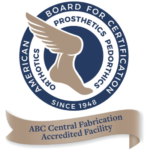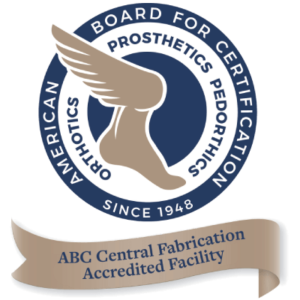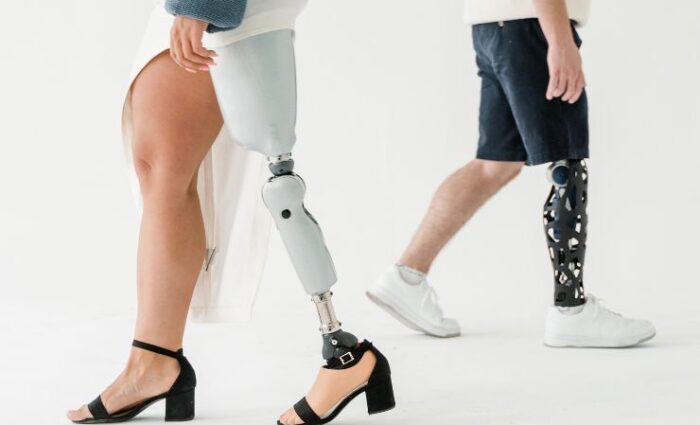Innovative Materials in Prosthetic Fabrication: Enhancing Comfort and Durability
The field of prosthetic fabrication has advanced significantly over the years, thanks to innovations in materials and technology. These advancements have allowed for the creation of prostheses that are not only more durable and functional but also more comfortable for the wearer. At Grace Prosthetic Fabrication, we are dedicated to utilizing the latest materials to enhance the overall experience for our patients, ensuring that they receive a prosthetic that suits their lifestyle and meets their unique needs.
In this blog, we’ll explore some of the innovative materials used in prosthetic fabrication and how they contribute to the comfort, durability, and performance of modern prostheses.
1. Carbon Fiber: Strength and Lightness Combined
Carbon fiber is one of the most widely used materials in modern prosthetic fabrication due to its incredible strength-to-weight ratio. It is lightweight yet exceptionally strong, making it an ideal material for the pylon (the structural component) of a prosthesis.
Advantages of Carbon Fiber:
- Lightweight: Carbon fiber is extremely light, making it easier for the user to wear and move around with less strain on their residual limb.
- Durability: This material is incredibly strong and durable, able to withstand significant pressure and impacts while maintaining its integrity over time.
- Flexibility: Carbon fiber offers a certain degree of flexibility, which is beneficial for mimicking the natural movement of the body.
- Corrosion Resistance: Unlike metal, carbon fiber does not corrode, ensuring longevity and reducing the need for maintenance.
Tip: Carbon fiber is commonly used in prosthetic legs for below-the-knee amputations, especially for individuals who lead an active lifestyle and require additional strength and flexibility.
2. Titanium: Strength and Biocompatibility
Titanium is another advanced material commonly used in prosthetic fabrication, especially for components that need to be both lightweight and strong. Titanium is well known for its biocompatibility, which makes it an excellent choice for any prosthetic component that comes into direct contact with the body.
Advantages of Titanium:
- Biocompatibility: Titanium is highly biocompatible, meaning it integrates well with the body, reducing the likelihood of irritation or rejection.
- Strength and Durability: Titanium is a strong, lightweight metal that can endure daily wear and tear, making it ideal for weight-bearing parts of the prosthesis.
- Corrosion Resistance: Like carbon fiber, titanium is resistant to corrosion, making it highly durable in varying environmental conditions.
- Customizability: Titanium components can be easily shaped to meet the specific needs of the patient, ensuring a comfortable fit.
Tip: Titanium is commonly used in the sockets, pylons, and joint components of prostheses, especially in patients who require a highly durable yet lightweight prosthetic.
3. Silicone: Comfort and Skin-Friendly Properties
Silicone is increasingly used in prosthetic fabrication for its comfort, flexibility, and skin-friendly properties. It is often used in prosthetic liners, which are the parts that come into direct contact with the patient’s residual limb.
Advantages of Silicone:
- Comfort: Silicone is soft and flexible, providing a comfortable fit for the user. It helps prevent chafing and irritation, which is common with less flexible materials.
- Skin-Friendly: Silicone is non-irritating and hypoallergenic, making it an excellent choice for individuals with sensitive skin or those who are prone to allergic reactions.
- Shock Absorption: Silicone offers excellent cushioning and shock absorption, reducing the impact on the residual limb when walking or moving.
- Durability: Silicone is durable and resistant to wear, ensuring that it remains functional over time.
Tip: Silicone liners are often used in both upper and lower limb prostheses to enhance comfort, especially for patients who wear their prosthesis for extended periods each day.
4. Myoelectric Materials: Bridging the Gap Between Technology and Movement
Myoelectric prostheses utilize electrical signals from the muscles of the residual limb to control the movement of the prosthesis. These types of prostheses require specialized materials that can transmit these signals effectively, allowing for more precise control and greater functionality.
Advantages of Myoelectric Materials:
- Advanced Control: Myoelectric prostheses offer greater control and functionality than traditional prostheses by using muscle signals to move the artificial limb.
- Natural Movement: These materials allow for more natural and intuitive movement, enabling the prosthesis to mimic the function of a biological limb more closely.
- Customizable Settings: Myoelectric prostheses can be adjusted to match the user’s specific needs, whether they require more precision for fine motor tasks or additional strength for walking or running.
Tip: Myoelectric materials are particularly useful for upper-limb prostheses, allowing users to control the movement of the hand, wrist, and elbow with their muscle signals.
5. Polyurethane Foam: Lightweight and Shock-Absorbent
Polyurethane foam is often used in prosthetic fabrication for creating lightweight and shock-absorbing components, particularly in the construction of prosthetic feet and certain limb sockets.
Advantages of Polyurethane Foam:
- Lightweight: Polyurethane foam is incredibly light, which helps reduce the overall weight of the prosthetic and makes it more comfortable for the user to wear.
- Shock Absorption: This material provides excellent cushioning and shock absorption, reducing the impact on the residual limb during movement.
- Moldability: Polyurethane foam can be easily molded to create custom shapes that fit the user’s specific anatomy.
Tip: This material is often used in the production of prosthetic feet and lower-limb components to ensure comfort during walking, running, or other activities.
Contact Grace Prosthetic Fabrication for Prosthetic Fabrication
The development of innovative materials has transformed the field of prosthetics, allowing patients to experience greater comfort, durability, and functionality than ever before. At Grace Prosthetic Fabrication, we are committed to using the latest materials to create custom prostheses that meet the unique needs of each patient. Whether you need a prosthetic for everyday use, athletic activities, or specialized needs, our team is dedicated to providing you with the best materials and craftsmanship for optimal performance.
If you’re considering a prosthesis or need more information about how innovative materials can enhance your prosthetic experience, contact Grace Prosthetic Fabrication today to learn more about our advanced fabrication process.






